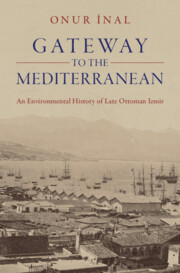Refine search
Actions for selected content:
3383200 results
Index
-
- Book:
- The Cambridge Introduction to Ernest Hemingway
- Published online:
- 15 September 2025
- Print publication:
- 02 October 2025, pp 198-202
-
- Chapter
- Export citation
Part IIIb - Christology and Philosophical Theology
- from Part III - The Contemporary Christological Discussions
-
- Book:
- The Cambridge Companion to Christology
- Published online:
- 15 September 2025
- Print publication:
- 02 October 2025, pp 285-286
-
- Chapter
- Export citation
Chapter 3 - Neuropsychology and Lesion Models
- from Section II - Measuring Emotional Processes
-
-
- Book:
- The Cambridge Handbook of Human Affective Neuroscience
- Published online:
- 16 September 2025
- Print publication:
- 02 October 2025, pp 55-71
-
- Chapter
- Export citation
Musical Examples
-
- Book:
- Haydn's Minuets and Eighteenth-Century Dance
- Published online:
- 12 September 2025
- Print publication:
- 02 October 2025, pp xii-xiii
-
- Chapter
- Export citation
8 - Enter China
-
- Book:
- Hierarchy and the State
- Published online:
- 20 August 2025
- Print publication:
- 02 October 2025, pp 161-190
-
- Chapter
- Export citation
4 - Dignity
-
- Book:
- Building Social Mobility
- Published online:
- 15 September 2025
- Print publication:
- 02 October 2025, pp 90-114
-
- Chapter
- Export citation
Chapter 16 - Conditioned Fear Learning
- from Section IV - Emotional Learning and Memory
-
-
- Book:
- The Cambridge Handbook of Human Affective Neuroscience
- Published online:
- 16 September 2025
- Print publication:
- 02 October 2025, pp 325-345
-
- Chapter
- Export citation

Gateway to the Mediterranean
- An Environmental History of Late Ottoman Izmir
- Coming soon
-
- Expected online publication date:
- October 2025
- Print publication:
- 16 October 2025
-
- Book
- Export citation
Contents
-
- Book:
- Building Social Mobility
- Published online:
- 15 September 2025
- Print publication:
- 02 October 2025, pp vii-viii
-
- Chapter
- Export citation
Index
-
- Book:
- Building Social Mobility
- Published online:
- 15 September 2025
- Print publication:
- 02 October 2025, pp 213-215
-
- Chapter
- Export citation
Contents
-
- Book:
- The Nature and Limitations of Conscience in Healthcare
- Published online:
- 12 September 2025
- Print publication:
- 02 October 2025, pp vii-ix
-
- Chapter
- Export citation
Appendix A - Supplemental Information, Chapter 2
-
- Book:
- Building Social Mobility
- Published online:
- 15 September 2025
- Print publication:
- 02 October 2025, pp 165-177
-
- Chapter
- Export citation
Part IIIa - Christology and Systematic Theology
- from Part III - The Contemporary Christological Discussions
-
- Book:
- The Cambridge Companion to Christology
- Published online:
- 15 September 2025
- Print publication:
- 02 October 2025, pp 201-284
-
- Chapter
- Export citation
6 - Implications for Effective Policy
-
- Book:
- Building Social Mobility
- Published online:
- 15 September 2025
- Print publication:
- 02 October 2025, pp 147-164
-
- Chapter
- Export citation
7 - Regulating Claims of Conscience
-
- Book:
- The Nature and Limitations of Conscience in Healthcare
- Published online:
- 12 September 2025
- Print publication:
- 02 October 2025, pp 152-172
-
- Chapter
- Export citation
Acknowledgments
-
- Book:
- Curating the Colonial Past
- Published online:
- 12 September 2025
- Print publication:
- 02 October 2025, pp x-xi
-
- Chapter
- Export citation
2 - Class Matters: The Sociology of the Profession
-
- Book:
- Palestinian Doctors
- Published online:
- 12 September 2025
- Print publication:
- 02 October 2025, pp 36-70
-
- Chapter
- Export citation
Contributors
-
- Book:
- The Cambridge Companion to Christology
- Published online:
- 15 September 2025
- Print publication:
- 02 October 2025, pp ix-x
-
- Chapter
- Export citation
Chapter 4 - Perception and Voluntary Motion
-
- Book:
- Galen on Human Physiology
- Published online:
- 28 July 2025
- Print publication:
- 02 October 2025, pp 139-182
-
- Chapter
- Export citation
7 - Nakba: The Displacement of the Medical Community
-
- Book:
- Palestinian Doctors
- Published online:
- 12 September 2025
- Print publication:
- 02 October 2025, pp 214-247
-
- Chapter
- Export citation
